The CFE Report: Do’s and don’ts for passing the CPA accounting exam
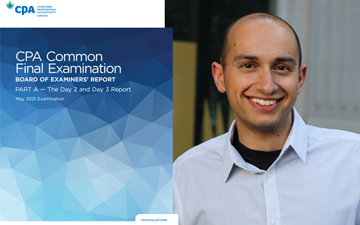
CPA Program coach Gevorg Grigoryan, CPA on the Board of Examiners Report
VANCOUVER – After every Common Final Examination, the Board of Examiners of CPA Canada publishes a report that outlines the performance of the writers. The Board is responsible for setting up the CPA CFE, marking the exams, and establishing the passing standard, which makes its report a valuable resource for aspiring chartered professional accountants in the CPA Program of Professional Studies.
The CFE Reports are available online and include copies of the CFE exam, solutions to its questions, and a commentary on the exam performance. Based on the comments from the latest Board report (May 2021), I’ve put together a list of key takeaways in the form of Do’s and Don’ts.
Day 1 Do’s and Don’ts
Day 1 of the CFE is linked to the Capstone 1 case, testing on both the content and skills developed in Capstone 1. You’re evaluated on a pass or fail decision based on how you apply the CPA Way.
The Do’s:
- Do manage your time: The Board notes that most candidates manage time well on Day 1. Your response to the four-hour case must have four components: Situational Analysis Framework (SAF), Analysis of Major Strategic issues, Analysis of Minor Operational issues, and Overall Recommendation. Ensure the amount of time you spend on SAF is balanced with the rest your response and avoid spending too much time on any one section.
- Do focus on changes from Capstone 1: The first step of Day 1 is writing the SAF. Make sure you focus on the relevant changes in the Day 1 case, as opposed to re-writing case facts from Capstone 1. Aim to write 30 per cent of SAF from Capstone 1 and 70 per cent from the new Day 1 case facts.
The Don’ts:
- Don’t spend too much time on quantitative analysis: The Board comments that some candidates are spending too much time on their quantitative analyses, performing more complex calculations than required. This is a common mistake that I see. The quants in Day 1 are indirect and you may be confused as to what quants tool to use. A simple strategy is using the company’s objectives and relevant case facts in the appendices as indicators. For example, the May 2021 Day 1 case, WDI v1, indicated that the company set a new objective based on return on assets (ROA). This is an indicator that ROA is the most relevant quants calculation to perform.
- Don’t overanalyze operational issues: For the Major Strategic issues, it’s important that you discuss both the quantitative and qualitative components. However, for Minor Operational issues, it’s sufficient to discuss a few paragraphs of qualitative implications and recommend on it.
Day 2 Do’s and Don’ts
Day 2 tests technical depth in the common core competency areas of Financial Reporting and/or Management Accounting, and in one of four unique roles (Assurance, Performance Management, Finance, and Taxation).
The Do’s:
- Do study more DAIS: As I noted in my Core 2 article, data analytics and information services (DAIS) are being tested more and more by CPA Canada. Both May and September 2021 CFEs had DAIS assessment opportunities (AOs). You should download, attempt and fully debrief both May and September CFEs to understand how DAIS are now tested.
- Do support your calculations: When performing quantitative analysis, it’s important that you support your analyses in the spreadsheet. If markers can’t tell where the numbers came from or what calculations you were attempting to do, they won’t award you marks.
The Don’ts:
- Don’t skip the hard AOs: Non-routine and new issues are challenging for many writers. Most tend to avoid those entirely. Spending excessive time on these AOs is not recommended but you should at least attempt them. The CFE has not only depth and breadth tests but also a sufficiency score that is impacted by skipping these AOs.
- Don’t write unrelated discussions: The Board notes that candidates insert discussions that are not relevant to the case. Candidates seem to be trying to fit answers from prior practice exams into the current year’s exam, rather than addressing the case facts as presented. Ensure that you read the requireds carefully and tailor your answer to the specific issue.
Day 3 Do’s and Don’ts
The Day 3 is the breadth test, covering all common core competency areas. It’s intentionally time constrained and most run out of time. It’s important that you type fast and go with your gut feeling, as suggest by the May 2021 Gold Medalist.
The Do’s:
- Do use the correct format: Though formats and templates are an effective way to communicate your response, it’s important to read the requireds carefully and apply the correct format. For example, one of the May 2021 CFE Day 3 cases required candidates to prepare an audit planning memo. Candidates who were applying a templated approach prepared an entire audit planning memo. The required asked to discuss only the risk of material misstatement, so preparing an entire memo was inaccurate.
- Do answer the “So what?”: The Board is looking for your understanding of the issues and application of logical analysis. It’s important that you answer the questions “Why?” and “So what?” when making any point using case facts. Writing technicals without applying them to the specific case, or repeating case facts without explanation — even if it’s in a logical format such as listing pros/cons — is not enough to pass. To answer the “So what?”, use connectors, such as “which means” and “therefore,” to articulate your thoughts.
The Don’ts:
- Don’t spend too much time on Case 1: Spending too much time on Case 1 results in running out of time on Cases 2 and 3. Remember that Case 1 tends to be the longest of the three, requiring you to display strong time management skills.
- Don't be generic: Avoid very short, point-form, and generic responses that are hard for markers to interpret. For example, avoid copying information from the Handbook without applying that information to the case facts, or listing criteria with labels “met” or “not met,” without providing an explanation as to why it’s met or not met.
Conclusion
The Board’s overarching message to CFE candidates is to expect more issues on challenging and emerging topics (such as non-GAAP measures and DAIS). The Board is looking to assess your ability to work through an issue you’ve never seen before. To prepare, you should learn how to look up relevant standards, draw on principles, explore alternatives, and use professional judgment to tackle these issues — just like you will when you finally become a Canadian accountant.
Gevorg Grigoryan, CPA, is an accounting manager and instructor, mentor and coach to students in the CPA program. Visit Gevorg CPA to learn more and subscribe to Gevorg’s YouTube channel to access CPA program videos. Author photo courtesy GevorgCPA.




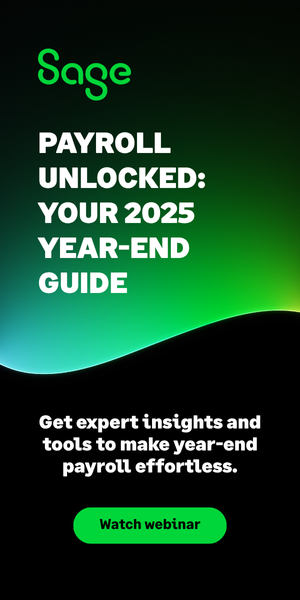
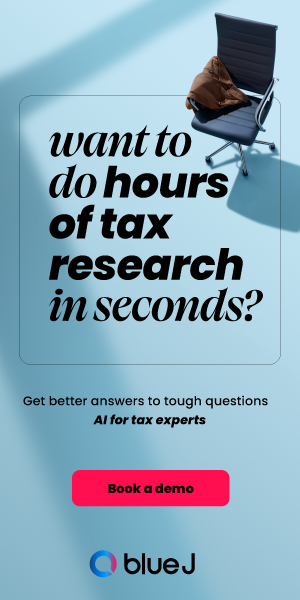


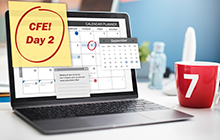
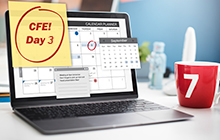

(0) Comments